#Google ads spy tool
Text
Redefining Digital Marketing with Display Advertising Platforms
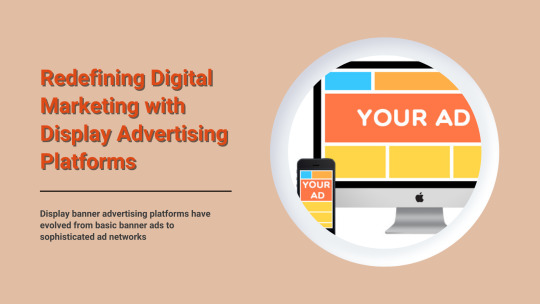
Digital marketing has undergone a significant transformation over the years, especially with the advent of display ad platforms. These platforms have revolutionized how businesses reach their target audience, offering a powerful way to showcase products and services through visually appealing banner ads. In this article, we'll explore the impact of display advertising platforms on digital marketing and discuss best practices for creating effective display ad campaigns.
The Evolution of Display Advertisement Platforms
Display banner advertising platforms have evolved from basic banner ads to sophisticated ad networks that leverage advanced targeting options and real-time bidding. One of the key advantages of display advertising is its ability to reach a large audience across various websites and apps, increasing brand visibility and driving traffic to your website.
Benefits of Display Ads Platforms
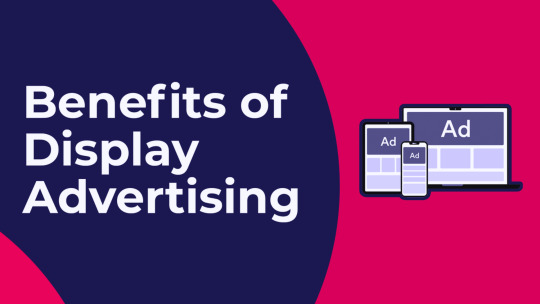
Targeted Advertising: Display ads best platforms allow you to target specific demographics, interests, and behaviors. This means you can ensure that your ads are seen by people who are likely to be interested in your products or services. By targeting the right audience, you can increase the effectiveness of your advertising campaigns and improve your return on investment (ROI).
Brand Awareness: Display ads are visually engaging and can help you build brand awareness and recognition among your target audience. By displaying your ads on relevant websites and apps, you can increase the visibility of your brand and make it more memorable to potential customers.
Cost-Effective: Display advertising can be more cost-effective than other forms of advertising, such as TV or print ads. With display advertising bookmark the best ads, you can reach a large audience at a relatively low cost, especially when you consider the potential reach and targeting options available. This makes display advertising a cost-effective option for businesses looking to maximize their advertising budget.
Measurable Outcomes: Platforms for display advertisements offer thorough analytics and reporting, enabling you to monitor the effectiveness of your ads in real-time. You can see metrics such as impressions, clicks, and conversions, which can help you understand how your ads are performing and make adjustments as needed to improve their effectiveness. By measuring the results of your display advertising campaigns, you can ensure that you are getting the most out of your advertising budget and achieving your marketing goals.
Display Ads Best Practices

Compelling Visuals: Using high-quality images and graphics is important because visual elements can grab the viewer's attention more effectively than text alone. Compelling visuals can help your ad stand out from the competition and make a lasting impression on your audience. They also play a crucial role in conveying your message and making it more memorable.
Clear Call-to-Action (CTA): A clear and concise CTA is essential for driving action from your audience. Your CTA should be prominently displayed in your advertising platforms and clearly state what action you want the viewer to take, such as "Shop Now," "Sign Up," or "Learn More." A strong CTA can help increase the click-through rate (CTR) of your ad and improve the overall effectiveness of your campaign.
Relevant Messaging: Tailoring your ad copy to resonate with your target audience is key to capturing their attention and persuading them to take action. Your messaging should highlight the benefits of your products or services and address the needs and interests of your audience. By creating relevant messaging, you can make your ads more engaging and increase the likelihood of conversion.
Mobile Optimization: With a significant portion of internet users accessing content through mobile devices, it's crucial to ensure that your display ads are optimized for mobile. This means designing ads that are visually appealing and easy to read on smaller screens, as well as ensuring fast loading times and a seamless user experience. Mobile optimization can help you reach a larger audience and improve the performance of your display advertising campaigns.
Google Ads Spy Tool and Ad Spy Tools
Tools like the Google Ads Spy Tool and other ad spy tools can provide valuable insights into your competitors' display ad strategies. By analyzing their ad creatives, messaging, and targeting, you can gain a competitive edge and refine your own display advertising campaigns.
Conclusion
The display advertising platforms have redefined digital marketing, offering businesses a powerful way to reach their target audience with visually engaging ads. By following best practices and leveraging tools like the Google Ads Spy Tool, you can create effective display ad campaigns that drive results and help you achieve your marketing goals.
#Display advertising platforms#Banner advertising network#Display ads best practices#Google ads spy tool#Ad spy tools
0 notes
Text
Redefining Digital Marketing with Display Advertising Platforms

Digital marketing has undergone a significant transformation over the years, especially with the advent of display ad platforms. These platforms have revolutionized how businesses reach their target audience, offering a powerful way to showcase products and services through visually appealing banner ads. In this article, we'll explore the impact of display advertising platforms on digital marketing and discuss best practices for creating effective display ad campaigns.
The Evolution of Display Advertisement Platforms
Display banner advertising platforms have evolved from basic banner ads to sophisticated ad networks that leverage advanced targeting options and real-time bidding. One of the key advantages of display advertising is its ability to reach a large audience across various websites and apps, increasing brand visibility and driving traffic to your website.
Benefits of Display Ads Platforms

Targeted Advertising: Display ads best platforms allow you to target specific demographics, interests, and behaviors. This means you can ensure that your ads are seen by people who are likely to be interested in your products or services. By targeting the right audience, you can increase the effectiveness of your advertising campaigns and improve your return on investment (ROI).
Brand Awareness: Display ads are visually engaging and can help you build brand awareness and recognition among your target audience. By displaying your ads on relevant websites and apps, you can increase the visibility of your brand and make it more memorable to potential customers.
Cost-Effective: Display advertising can be more cost-effective than other forms of advertising, such as TV or print ads. With display advertising bookmark the best ads, you can reach a large audience at a relatively low cost, especially when you consider the potential reach and targeting options available. This makes display advertising a cost-effective option for businesses looking to maximize their advertising budget.
Measurable Outcomes: Platforms for display advertisements offer thorough analytics and reporting, enabling you to monitor the effectiveness of your ads in real-time. You can see metrics such as impressions, clicks, and conversions, which can help you understand how your ads are performing and make adjustments as needed to improve their effectiveness. By measuring the results of your display advertising campaigns, you can ensure that you are getting the most out of your advertising budget and achieving your marketing goals.
Display Ads Best Practices

Compelling Visuals: Using high-quality images and graphics is important because visual elements can grab the viewer's attention more effectively than text alone. Compelling visuals can help your ad stand out from the competition and make a lasting impression on your audience. They also play a crucial role in conveying your message and making it more memorable.
Clear Call-to-Action (CTA): A clear and concise CTA is essential for driving action from your audience. Your CTA should be prominently displayed in your advertising platforms and clearly state what action you want the viewer to take, such as "Shop Now," "Sign Up," or "Learn More." A strong CTA can help increase the click-through rate (CTR) of your ad and improve the overall effectiveness of your campaign.
Relevant Messaging: Tailoring your ad copy to resonate with your target audience is key to capturing their attention and persuading them to take action. Your messaging should highlight the benefits of your products or services and address the needs and interests of your audience. By creating relevant messaging, you can make your ads more engaging and increase the likelihood of conversion.
Mobile Optimization: With a significant portion of internet users accessing content through mobile devices, it's crucial to ensure that your display ads are optimized for mobile. This means designing ads that are visually appealing and easy to read on smaller screens, as well as ensuring fast loading times and a seamless user experience. Mobile optimization can help you reach a larger audience and improve the performance of your display advertising campaigns.
Google Ads Spy Tool and Ad Spy Tools
Tools like the Google Ads Spy Tool and other ad spy tools can provide valuable insights into your competitors' display ad strategies. By analyzing their ad creatives, messaging, and targeting, you can gain a competitive edge and refine your own display advertising campaigns.
Conclusion
The display advertising platforms have redefined digital marketing, offering businesses a powerful way to reach their target audience with visually engaging ads. By following best practices and leveraging tools like the Google Ads Spy Tool, you can create effective display ad campaigns that drive results and help you achieve your marketing goals.
#Display advertising platforms#Banner advertising network#Display ads best practices#Google ads spy tool#Ad spy tools
0 notes
Text
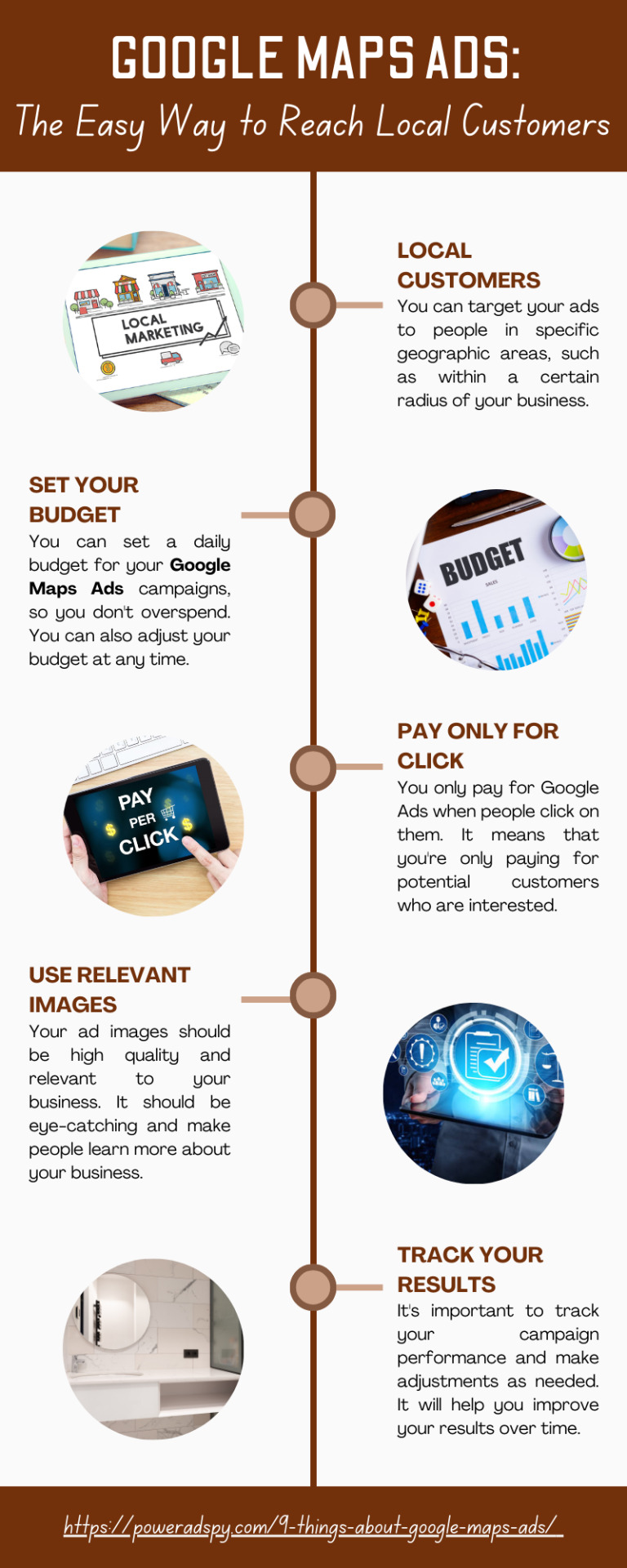
Google Maps Ads are a great way to reach local customers who are already looking for businesses like yours. In this infographic, you will get to know how to run map ads and reach local customers.
2 notes
·
View notes
Text
Stay Ahead of the Game: The Advantages of Google Responsive Display Ads
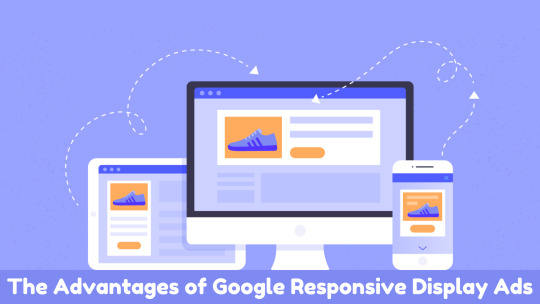
Being one step ahead of the competition is essential in the fast-paced world of online advertising. With the ever-evolving landscape of digital marketing, businesses need to adapt quickly to new trends and technologies to maintain their competitive edge. One such innovation that has revolutionized the way advertisers reach their target audience is RDAs.
Google Responsive Display Ads, or RDAs, are a dynamic advertising format that automatically adjusts its size, appearance, and format to fit the available ad space across the Google Display Network. Unlike traditional static ads, which require separate designs for various ad placements, RDAs streamline the ad creation process by adapting to the context of the user's device, website, and browsing behavior.
The Rapid Planning Method is a powerful productivity tool designed to help individuals and businesses achieve their goals more efficiently. By focusing on results, not just activities, the Rapid Planning Method enables users to prioritize tasks, allocate resources effectively, and execute plans with precision.
What Exactly Are Display Responsive Ads?
RDAs is a dynamic advertising format offered by Google Ads that automatically adjusts its size, appearance, and format to fit the available ad space across the Google Display Network. Unlike traditional static ads, which require separate designs for various ad placements, RDAs streamline the ad creation process by adapting to the context of the user's device, website, and browsing behavior.

Introducing RDAs into your advertising strategy offers several distinct advantages that can help propel your business to new heights:
Increased Reach and Visibility:
RDAs automatically adjust their size and format to fit a wide range of ad placements across websites, apps, and devices. This flexibility allows your ads to reach a broader audience, increasing visibility and brand awareness.
Improved Performance:
Google's machine learning algorithms optimize RDAs in real-time to maximize performance. By analyzing user behavior and performance data, RDAs deliver relevant ads to the right audience at the right time, resulting in higher click-through rates and conversions.
Cost-Effectiveness:
With RDAs, you only need to create one ad creative, significantly reducing the time and resources required for ad production. Additionally, Google's automated bidding strategies help you maximize your advertising budget by bidding competitively for ad placements that are most likely to drive results.
Dynamic Creativity:
RDAs dynamically generate ad creatives by combining images, headlines, and descriptions from your assets. This dynamic approach allows for endless variations of your ads, ensuring that each impression is tailored to the individual user, increasing engagement and relevance.
Streamlined Workflow:
The intuitive interface of Google Ads makes it easy to create and manage RDAs alongside your existing campaigns. With built-in reporting and optimization tools, you can monitor the performance of your RDAs in real time and make data-driven decisions to maximize results.
Google Responsive Display Ad Sizes & Specs
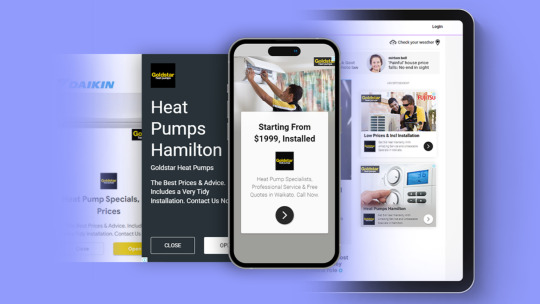
Understanding the general guidelines for ad specs and specifications can help advertisers create compelling ads. Here are the typical sizes and specifications for display responsive ads:
Square (1:1 aspect ratio):
Recommended size: 250 x 250 pixels
Maximum file size: 150 KB
Vertical rectangle (1:2 aspect ratio):
Recommended size: 240 x 400 pixels
Maximum file size: 150 KB
Banner (wide and short, 4:1 aspect ratio):
Recommended size: 468 x 60 pixels
Maximum file size: 150 KB
Leaderboard (short and wide, 6:1 aspect ratio):
Recommended size: 728 x 90 pixels
Maximum file size: 150 KB
Large rectangle (1:2 aspect ratio):
Recommended size: 336 x 280 pixels
Maximum file size: 150 KB
Skyscraper (1:4 aspect ratio):
Recommended size: 120 x 600 pixels
Maximum file size: 150 KB
Wide skyscraper (2:5 aspect ratio):
Recommended size: 160 x 600 pixels
Maximum file size: 150 KB
Mobile leaderboard (short and wide, 3:1 aspect ratio):
Recommended size: 320 x 50 pixels
Maximum file size: 150 KB
Half-page ad (1:2 aspect ratio):
Recommended size: 300 x 600 pixels
Maximum file size: 150 KB
Large mobile banner (4:1 aspect ratio):
Recommended size: 320 x 100 pixels
Maximum file size: 150 KB
You can also watch: PowerAdSpy | Discover Net-Gen Ad Analytics With Ad Intelligence Tool
youtube
In conclusion:
Google Responsive Display Ads are a game-changer for businesses looking to stay ahead in the competitive world of online advertising. By leveraging the power of automation and machine learning, RDAs offer increased reach, improved performance, cost-effectiveness, dynamic creativity, and a streamlined workflow. Incorporating RDAs into your advertising strategy can help you reach your marketing goals more efficiently and effectively.With the Rapid Planning Method, businesses can harness the full potential of RDAs by strategically planning and executing their advertising campaigns. By focusing on results and leveraging automation, businesses can stay ahead of the competition and achieve their marketing objectives with precision and efficiency.
#google responsive display ads#display responsive ads#benefits of responsive display ads#ad spy tools#Google Display Ads#Youtube
1 note
·
View note
Text
How To Get Started With Google Adwords Spy Tool
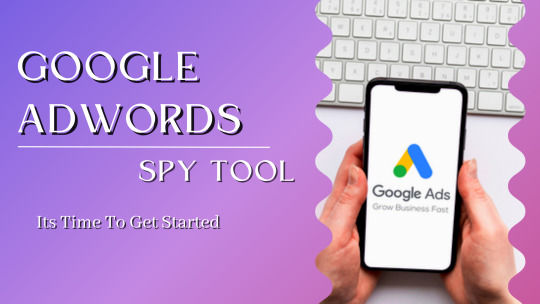
Google Ads has been extremely successful for businesses (Adwords). Even though taking the initial step sounds simple, many people hesitate when they see the requirements. You have to select a budget, make campaigns, bid on keywords, and use extensions.
The problem is this. Google Ads are effective, and you can get results very immediately. If you execute it correctly, you can start making fresh sales at the end of the first hour after getting up and running.
A Pay-Per-Click (PPC) system called Google Ads enables your company to show up in search results when consumers look up information about your goods or services.
We'll talk about using the Google AdWords Spy Tool to increase your company's visibility in this article. Here is a detailed tutorial on Google advertising.
Google AdWords Vs Google Ads
If you came looking for a Google AdWords tutorial since we mentioned "Google Ads" a few times, you are in the right place.
Google changed the name of its AdWords platform to Google Ads in the summer of 2018. As part of their effort to expand beyond merely text advertisements on Google searches, they changed the name of their brand. You can advertise through YouTube video integrations, display ads, and product listings across the platform.
Since "Google AdWords" is more widely known, we shall refer to it as it is instead of saying Google ads.
Benefits of Google AdWords
Adwords Works Faster Than SEO

The primary advantage of Google AdWords is that it operates more quickly than SEO. Google AdWords and SEO are search engine marketing techniques for increasing traffic and leads. However, a well-optimized AdWords campaign can help a company achieve the much sought-after top spot in search results faster.
Here are some explanations for why it is quicker and more efficient.
You can concentrate on several keywords at once.
The campaign can be activated or deactivated whenever you desire.
Ads that appear at the top of the page are immediately visible.
Increase Brand Awareness
In addition to increasing traffic, clicks, and conversions, the Google AdWords spy tool also works well for spreading the word about your brand. To confirm this, Google and Ipsos collaborated to conduct research spanning 12 industries, from retail to the automotive industry. Using search engine marketing to increase top-of-mind awareness by an average of 6.6%.
Boost Our Sales by Taking Advantage of Gmail's Inbox
Email marketing is one of the most common marketing techniques used by businesses, thus Gmail advertisements may also be beneficial. With Google AdWords' integration of native Gmail advertising in September 2015, you can reach more prospects through their Gmail inbox.
Calculate Your Performance Consistently

Traditional forms of advertising, such as those seen in publications like newspapers, radio, broadcast television, cable television, outdoor billboards, and pamphlets, are exceedingly challenging to evaluate. They are also far more expensive than Google AdWords.
AdWords, on the other hand, would provide detailed information about the campaign's performance. You'd be aware of:
Who made the click on your ad.
How many leads were produced?
How much traffic your website has received from AdWords.
Which keyword brought in the most visitors and prospects.
How much does each lead cost you?
Reconnect With Visitors Of Your Website
Reconnecting with your website visitors is one of Google AdWords' coolest features. Let me explain.
On your website, there may be people just browsing. These are those who have seen every page of your website without taking any further action. How can you help people remember who you are and what you can do for them? We now have an RLSA and Display Remarketing campaign and also an Instagram marketing campaign.
Tackle Your Competitor Better

When a customer looks online for something connected to your goods or services and you aren't running advertisements but your rivals are, that spells disaster for you. You'll almost immediately lose business.
You must pay close attention to them to learn how they are advertising their company, what sorts of ads they are running, etc. You can accomplish this with the use of Google AdWords' open system. Seize the chances that present themselves so you may differentiate yourself from the competitors.
Explore Better Using Your Ads
Uncertain about the title? When you connect your Google ads update and Google Analytics accounts, as I indicated, there is a lot more to discover. Although AdWords is a fantastic tool, it won't tell you what individuals do after clicking the advertisements. Google Analytics, however, will clarify.
Length of time spent on a page by a visitor.
How many times has a page been viewed?
Your landing page's bounce rate.
Information on new and returning visitors, among other things.
Also Watch:- How to Search Competitors Google Ads By Keywords, Domains
youtube
Final Words
Lastly, we hope this article will help the readers to understand the Google AdWords spy tool the most. Because as we know Google ads are the most used ad network.
0 notes
Text

In this infographics, we will learn what is a Google Adwords spy tools and its benefits
0 notes
Text
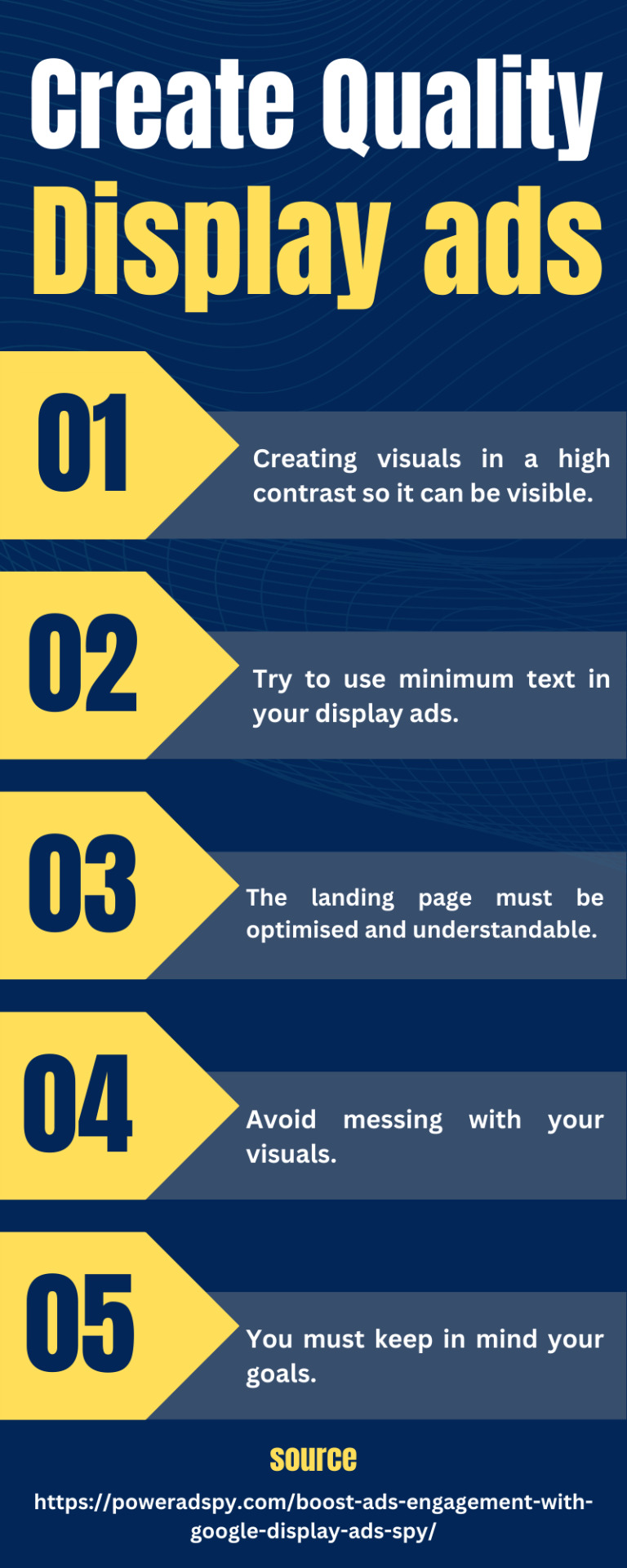
0 notes
Text
Apple to EU: “Go fuck yourself”

If you'd like an essay-formatted version of this post to read or share, here's a link to it on pluralistic.net, my surveillance-free, ad-free, tracker-free blog:
https://pluralistic.net/2024/02/06/spoil-the-bunch/#dma

There's a strain of anti-anti-monopolist that insists that they're not pro-monopoly – they're just realists who understand that global gigacorporations are too big to fail, too big to jail, and that governments can't hope to rein them in. Trying to regulate a tech giant, they say, is like trying to regulate the weather.
This ploy is cousins with Jay Rosen's idea of "savvying," defined as: "dismissing valid questions with the insider's, 'and this surprises you?'"
https://twitter.com/jayrosen_nyu/status/344825874362810369?lang=en
In both cases, an apologist for corruption masquerades as a pragmatist who understands the ways of the world, unlike you, a pathetic dreamer who foolishly hopes for a better world. In both cases, the apologist provides cover for corruption, painting it as an inevitability, not a choice. "Don't hate the player. Hate the game."
The reason this foolish nonsense flies is that we are living in an age of rampant corruption and utter impunity. Companies really do get away with both literal and figurative murder. Governments really do ignore horrible crimes by the rich and powerful, and fumble what rare, few enforcement efforts they assay.
Take the GDPR, Europe's landmark privacy law. The GDPR establishes strict limitations of data-collection and processing, and provides for brutal penalties for companies that violate its rules. The immediate impact of the GDPR was a mass-extinction event for Europe's data-brokerages and surveillance advertising companies, all of which were in obvious violation of the GDPR's rules.
But there was a curious pattern to GDPR enforcement: while smaller, EU-based companies were swiftly shuttered by its provisions, the US-based giants that conduct the most brazen, wide-ranging, illegal surveillance escaped unscathed for years and years, continuing to spy on Europeans.
One (erroneous) way to look at this is as a "compliance moat" story. In that story, GDPR requires a bunch of expensive systems that only gigantic companies like Facebook and Google can afford. These compliance costs are a "capital moat" – a way to exclude smaller companies from functioning in the market. Thus, the GDPR acted as an anticompetitive wrecking ball, clearing the field for the largest companies, who get to operate without having to contend with smaller companies nipping at their heels:
https://www.techdirt.com/2019/06/27/another-report-shows-gdpr-benefited-google-facebook-hurt-everyone-else/
This is wrong.
Oh, compliance moats are definitely real – think of the calls for AI companies to license their training data. AI companies can easily do this – they'll just buy training data from giant media companies – the very same companies that hope to use models to replace creative workers with algorithms. Create a new copyright over training data won't eliminate AI – it'll just confine AI to the largest, best capitalized companies, who will gladly provide tools to corporations hoping to fire their workforces:
https://pluralistic.net/2023/02/09/ai-monkeys-paw/#bullied-schoolkids
But just because some regulations can be compliance moats, that doesn't mean that all regulations are compliance moats. And just because some regulations are vigorously applied to small companies while leaving larger firms unscathed, it doesn't follow that the regulation in question is a compliance moat.
A harder look at what happened with the GDPR reveals a completely different dynamic at work. The reason the GDPR vaporized small surveillance companies and left the big companies untouched had nothing to do with compliance costs. The Big Tech companies don't comply with the GDPR – they just get away with violating the GDPR.
How do they get away with it? They fly Irish flags of convenience. Decades ago, Ireland started dabbling with offering tax-havens to the wealthy and mobile – they invented the duty-free store:
https://en.wikipedia.org/wiki/Duty-free_shop#1947%E2%80%931990:_duty_free_establishment
Capturing pennies from the wealthy by helping them avoid fortunes they owed in taxes elsewhere was terribly seductive. In the years that followed, Ireland began aggressively courting the wealthy on an industrial scale, offering corporations the chance to duck their obligations to their host countries by flying an Irish flag of convenience.
There are other countries who've tried this gambit – the "treasure islands" of the Caribbean, the English channel, and elsewhere – but Ireland is part of the EU. In the global competition to help the rich to get richer, Ireland had a killer advantage: access to the EU, the common market, and 500m affluent potential customers. The Caymans can hide your money for you, and there's a few super-luxe stores and art-galleries in George Town where you can spend it, but it's no Champs Elysees or Ku-Damm.
But when you're competing with other countries for the pennies of trillion-dollar tax-dodgers, any wins can be turned into a loss in an instant. After all, any corporation that is footloose enough to establish a Potemkin Headquarters in Dublin and fly the trídhathach can easily up sticks and open another Big Store HQ in some other haven that offers it a sweeter deal.
This has created a global race to the bottom among tax-havens to also serve as regulatory havens – and there's a made-in-the-EU version that sees Ireland, Malta, Cyprus and sometimes the Netherlands competing to see who can offer the most impunity for the worst crimes to the most awful corporations in the world.
And that's why Google and Facebook haven't been extinguished by the GDPR while their rivals were. It's not compliance moats – it's impunity. Once a corporation attains a certain scale, it has the excess capital to spend on phony relocations that let it hop from jurisdiction to jurisdiction, chasing the loosest slots on the strip. Ireland is a made town, where the cops are all on the take, and two thirds of the data commissioner's rulings are eventually overturned by the federal court:
https://www.iccl.ie/digital-data/iccl-2023-gdpr-report/
This is a problem among many federations, not just the EU. The US has its onshore-offshore tax- and regulation-havens (Delaware, South Dakota, Texas, etc), and so does Canada (Alberta), and some Swiss cantons are, frankly, batshit:
https://lenews.ch/2017/11/25/swiss-fact-some-swiss-women-had-to-wait-until-1991-to-vote/
None of this is to condemn federations outright. Federations are (potentially) good! But federalism has a vulnerability: the autonomy of the federated states means that they can be played against each other by national or transnational entities, like corporations. This doesn't mean that it's impossible to regulate powerful entities within a federation – but it means that federal regulation needs to account for the risk of jurisdiction-shopping.
Enter the Digital Markets Act, a new Big Tech specific law that, among other things, bans monopoly app stores and payment processing, through which companies like Apple and Google have levied a 30% tax on the entire app market, while arrogating to themselves the right to decide which software their customers may run on their own devices:
https://pluralistic.net/2023/06/07/curatorial-vig/#app-tax
Apple has responded to this regulation with a gesture of contempt so naked and broad that it beggars belief. As Proton describes, Apple's DMA plan is the very definition of malicious compliance:
https://proton.me/blog/apple-dma-compliance-plan-trap
Recall that the DMA is intended to curtail monopoly software distribution through app stores and mobile platforms' insistence on using their payment processors, whose fees are sky-high. The law is intended to extinguish developer agreements that ban software creators from informing customers that they can get a better deal by initiating payments elsewhere, or by getting a service through the web instead of via an app.
In response, Apple, has instituted a junk fee it calls the "Core Technology Fee": EUR0.50/install for every installation over 1m. As Proton writes, as apps grow more popular, using third-party payment systems will grow less attractive. Apple has offered discounts on its eye-watering payment processing fees to a mere 20% for the first payment and 13% for renewals. Compare this with the normal – and far, far too high – payment processing fees the rest of the industry charges, which run 2-5%. On top of all this, Apple has lied about these new discounted rates, hiding a 3% "processing" fee in its headline figures.
As Proton explains, paying 17% fees and EUR0.50 for each subscriber's renewal makes most software businesses into money-losers. The only way to keep them afloat is to use Apple's old, default payment system. That choice is made more attractive by Apple's inclusion of a "scare screen" that warns you that demons will rend your soul for all eternity if you try to use an alternative payment scheme.
Apple defends this scare screen by saying that it will protect users from the intrinsic unreliability of third-party processors, but as Proton points out, there are plenty of giant corporations who get to use their own payment processors with their iOS apps, because Apple decided they were too big to fuck with. Somehow, Apple can let its customers spend money Uber, McDonald's, Airbnb, Doordash and Amazon without terrorizing them about existential security risks – but not mom-and-pop software vendors or publishers who don't want to hand 30% of their income over to a three-trillion-dollar company.
Apple has also reserved the right to cancel any alternative app store and nuke it from Apple customers' devices without warning, reason or liability. Those app stores also have to post a one-million euro line of credit in order to be considered for iOS. Given these terms, it's obvious that no one is going to offer a third-party app store for iOS and if they did, no one would list their apps in it.
The fuckery goes on and on. If an app developer opts into third-party payments, they can't use Apple's payment processing too – so any users who are scared off by the scare screen have no way to pay the app's creators. And once an app creator opts into third party payments, they can never go back – the decision is permanent.
Apple also reserves the right to change all of these policies later, for the worse ("I am altering the deal. Pray I don't alter it further" -D. Vader). They have warned developers that they might change the API for reporting external sales and revoke developers' right to use alternative app stores at its discretion, with no penalties if that screws the developer.
Apple's contempt extends beyond app marketplaces. The DMA also obliges Apple to open its platform to third party browsers and browser engines. Every browser on iOS is actually just Safari wrapped in a cosmetic skin, because Apple bans third-party browser-engines:
https://pluralistic.net/2022/12/13/kitbashed/#app-store-tax
But, as Mozilla puts it, Apple's plan for this is "as painful as possible":
https://www.theverge.com/2024/1/26/24052067/mozilla-apple-ios-browser-rules-firefox
For one thing, Apple will only allow European customers to run alternative browser engines. That means that Firefox will have to "build and maintain two separate browser implementations — a burden Apple themselves will not have to bear."
(One wonders how Apple will treat Americans living in the EU, whose Apple accounts still have US billing addresses – these people will still be entitled to the browser choice that Apple is grudgingly extending to Europeans.)
All of this sends a strong signal that Apple is planning to run the same playbook with the DMA that Google and Facebook used on the GDPR: ignore the law, use lawyerly bullshit to chaff regulators, and hope that European federalism has sufficiently deep cracks that it can hide in them when the enforcers come to call.
But Apple is about to get a nasty shock. For one thing, the DMA allows wronged parties to start their search for justice in the European federal court system – bypassing the Irish regulators and courts. For another, there is a global movement to check corporate power, and because the tech companies do the same kinds of fuckery in every territory, regulators are able to collaborate across borders to take them down.
Take Apple's app store monopoly. The best reference on this is the report published by the UK Competition and Markets Authority's Digital Markets Unit:
https://assets.publishing.service.gov.uk/media/63f61bc0d3bf7f62e8c34a02/Mobile_Ecosystems_Final_Report_amended_2.pdf
The devastating case that the DMU report was key to crafting the DMA – but it also inspired a US law aimed at forcing app markets open:
https://www.congress.gov/bill/117th-congress/senate-bill/2710
And a Japanese enforcement action:
https://asia.nikkei.com/Business/Technology/Japan-to-crack-down-on-Apple-and-Google-app-store-monopolies
And action in South Korea:
https://www.reuters.com/technology/skorea-considers-505-mln-fine-against-google-apple-over-app-market-practices-2023-10-06/
These enforcers gather for annual meetings – I spoke at one in London, convened by the Competition and Markets Authority – where they compare notes, form coalitions, and plan strategy:
https://www.eventbrite.co.uk/e/cma-data-technology-and-analytics-conference-2022-registration-308678625077
This is where the savvying breaks down. Yes, Apple is big enough to run circles around Japan, or South Korea, or the UK. But when those countries join forces with the EU, the USA and other countries that are fed up to the eyeballs with Apple's bullshit, the company is in serious danger.
It's true that Apple has convinced a bunch of its customers that buying a phone from a multi-trillion-dollar corporation makes you a member of an oppressed religious minority:
https://pluralistic.net/2024/01/12/youre-holding-it-wrong/#if-dishwashers-were-iphones
Some of those self-avowed members of the "Cult of Mac" are willing to take the company's pronouncements at face value and will dutifully repeat Apple's claims to be "protecting" its customers. But even that credulity has its breaking point – Apple can only poison the well so many times before people stop drinking from it. Remember when the company announced a miraculous reversal to its war on right to repair, later revealed to be a bald-faced lie?
https://pluralistic.net/2023/09/22/vin-locking/#thought-differently
Or when Apple claimed to be protecting phone users' privacy, which was also a lie?
https://pluralistic.net/2022/11/14/luxury-surveillance/#liar-liar
The savvy will see Apple lying (again) and say, "this surprises you?" No, it doesn't surprise me, but it pisses me off – and I'm not the only one, and Apple's insulting lies are getting less effective by the day.

Image:
Alex Popovkin, Bahia, Brazil from Brazil (modified)
https://commons.wikimedia.org/wiki/File:Annelid_worm,_Atlantic_forest,_northern_littoral_of_Bahia,_Brazil_%2816107326533%29.jpg
CC BY 2.0
https://creativecommons.org/licenses/by/2.0/deed.en
--
Hubertl (modified)
https://commons.wikimedia.org/wiki/File:2015-03-04_Elstar_%28apple%29_starting_putrefying_IMG_9761_bis_9772.jpg
CC BY-SA 4.0
https://creativecommons.org/licenses/by-sa/4.0/deed.en
#pluralistic#apple#malicious compliance#dma#digital markets act#eu#european union#federalism#corporatism#monopolies#trustbusting#regulation#protonmail#junk fees#cult of mac#interoperability#browser wars#firefox#mozilla#webkit#browser engines
594 notes
·
View notes
Text
Adwords Spy Tool: Impeccable Way To Spy Your Competitors
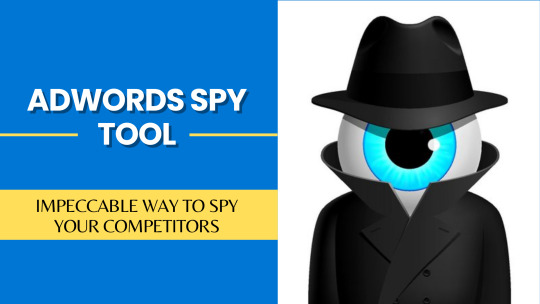
As a marketer, you have so many responsibilities to fulfill. Responsibilities include enhancing company's profits by analyzing all the previous data, motivating your employees, etc. Apart from it, the prime responsibility you have to perform as a manager is to keep an eye on your competitors.
But this common question always arises, how to spy on your competitors? And the answer to this question is none other than Adwords Spy Tool.
So, do you know a little bit about it? But if you didn't, then don't worry. This article will surely help you out in understanding the Adwords tool.
So, let's start from the basics.
A Brief Info Of Google Adwords
Google AdWords is one of the services which marketers utilize to advertise their content, brand, website, and other internet properties.
When the material of partner websites and Google web pages match the keywords, it is a type of keyword-rich, brief advertising copy that appears there.
And if we talk about only Adwords, then it is an advertising system Google developed to facilitate businesses reach online target markets using its search engine platform and associated sites.
After a user searches for keywords and phrases related to a business and its products or services, these associated sites display text or image ads. So this is the brief intro of the Google Adwords spy tool.
Benefits Of Displaying Ads Via Google Adwords
Target Advertisements-
You can target people with specific interests, such as those who are interested in your products and services, and provide them with appropriate adverts.
When customers search for these terms or go to websites relevant to them, your adverts will be displayed using keywords relating to your goods or services.
Place your advertising on websites in the Google Search and Display Networks and on Google search results pages.
Age, place, and tongue: Select the language, region, and age of your customers.
Days, times, and frequency: Choose which days or times of the week your ads will run, as well as how frequently you want them to do so.
Keep Your Costs Under Control.
You have total control over how your money is spent with Google Ads. No minimum is established. Additionally, you can choose the amount you wish to spend on each day, ad, and month. Only when someone clicks on your advertisement will you be charged.
Analyze Your Progress

Google Ads will let you know if your advertisement is clicked on. You can also monitor whether someone clicked on your advertisement and then took an action that benefited your company, such as buying your goods, downloading your app, or placing an order over the phone.
You may make quick decisions about where to invest in your campaign by keeping track of which advertisements get clicked and which don't. Your return on investment may rise as a result.
Additionally, you can learn essential details like the typical cost of advertising that results in phone calls from customers or online sales. Additionally, you can utilize analytical tools to discover more about your consumers' purchasing patterns, such as how much time they devote to investigating your offering before making a purchase.
So, these are some benefits that will help you to understand clearly the Adwords Spy Tool.
Best Tool For Spying On Your Competitor's Google Ads
PowerAdspy:-

PowerAdSpy is a great tool that lets you identify the best native ads from your competitors by offering both basic search capability and complex filtering. This tool is designed to analyze your competitors' strategies in-depth. This software's capabilities include filtering by adoption, comprehensive visibility, data from millions of advertisements from 15+ countries, the ability to focus your searches, and the ability to look up Shopify Ads of your rivals. It is the best google ads spy tool to spy on your competitors.
SpyFu:-
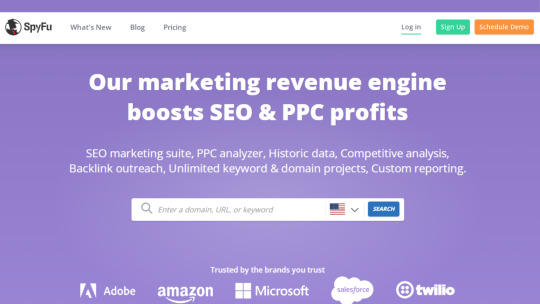
SpyFu is an excellent tool that will enable you to outperform your rivals. It is also a piece of software that is incredibly easy to use and understand. The capabilities of this software include boosting website traffic, monitoring keyword rankings, focusing on competitors, and in-depth report analysis. And this is the perfect Spy Tools that companies should have.
Anstrex:-
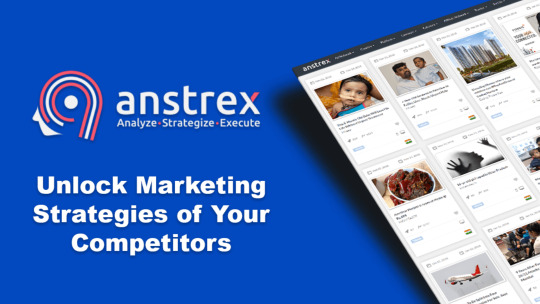
One of the greatest native ad spy software solutions is Anstrex. From more than three million adverts and more than 20 distinct ad networks, our platform offers advanced ad data.
Basic search tools are available in both the desktop and mobile versions of Anstrex's ads, and users may rapidly browse landing sites from rival businesses. You can download these landing pages if you wish to go a step further.
You can also watch: PowerAdSpy - Best Facebook Ads Spy Tool
youtube
Conclusion
Hence, spying on your competitors is silent nowadays. And we have observed that many people are still afraid to use the Adwords Spy Tool. But using this tool will be really helpful for you to keep an eye on your competitors.
So, this is it for now. We will come again with new topics. Till then, keep reading!!
0 notes
Note
After I deleted a bunch of projects (thankfully non-critical, though representing a great deal of work in total) during a recent fresh OS install, I realized that my backup practices are practically non-existent. Any tips or sources on getting started making, and eventually automating, effective backups?
I am stealing the concept here from jwz's backup guide, but I am recommending different tools, focusing on personal files only, and also addressing Windows. jwz's guide is a good reference:
Doing a way, way better job than most people of backing up one single system is very easy. Let us begin.
The most basic step of having decent backups is getting your hands on two external hard drives at least big enough to hold your entire system, and putting a label on them that says "BACKUP ONLY DO NOT USE FOR ANYTHING ELSE I AM BEING FOR REAL HERE"
Once you've got those, plug one into your system wherever it spends the most time. If you have a desktop then that's solved, if it's a laptop hopefully you already have a USB hub you plug it into when you sit down to work or whatever and you can just leave it there.
Now set up regular scheduled backups to that device. On Windows and Mac, there's a built in tool for backing up your system to an external drive. We'll assume that you just want to back up your user files on Windows and Linux, since doing full system backups isn't tricky but is kind of unnecessary.
(Ugh. Windows seems to be trying to phase out Windows Backup and Restore in favour of their File History thing. That's annoying, let me log in to windows and check how this actually works. Mac in the meantime)
Mac has Time Machine. Time Machine is extremely good, and you can tell Time Machine to save its backups to a disk. Point Time Machine at your external hard drive and tell it to schedule a backup however frequently you want. If anything goes wrong in the future, you can ask Time Machine to look at that backup disk and it'll show you a few versions of whatever you backed up there. I'm not a Mac user but I think you can even use Time Machine to transfer between an old computer and a new one.
Windows now has File History which I have never used in my life, they added it after I stopped using Windows. Same idea though, pick some folders and back them up to an external storage device. If anything goes wrong, use File History to go back through that device and find the version of the file you wanted. I don't know if there's still a way to access the older Backup and Restore system.
On Linux, my favoured way to manage simple desktop backups is Deja Dup, a GUI for Duplicity. Duplicity can do a lot more than just backup to a disk, but we'll start there. Install Deja Dup, open it up, and follow the prompts to back up your user files to the external drive. Deja Dup can also do backups to remote storage servers, Google Drive/Onedrive, and commercial storage providers like Amazon and Backblaze. It will even encrypt your backups if you are worried about Amazon spying on your files or whatever. If something goes wrong, point Deja Dup at your backup drive and it will offer you a suite of restore options covering a few versions.
Now, you have a permanently plugged in hard drive that will always get rolling backups you can restore from. These aren't safe from, say, ransomware, or your house burning down, but at least you won't lose anything when you update a computer or accidentally delete something and have an ohshit moment.
Now you take that other drive you bought, and do the same backup you're already doing to that. Now you go put it somewhere else where it's readily accessible and won't be accidentally used for anything, keep it at the office, give it to your dad, whatever. Set a reminder on your phone for once a month. Once a month, go get that drive, run another backup, and put it back. You now have better backups than many medium sized businesses.
This is impractical to scale beyond one PC, but if we're being honest even when I had like half a dozen laptops, only one contained much of value. Back up the system you care about.
Don't worry too much about making sure your backups are space efficient, like, yeah it would be a good idea to exclude game installs and stuff from your backups to save space but if that sounds daunting or time consuming literally do not do it. Decision paralysis is brain poison, just back it up and sort it out later. 2TB external hard drives are cheap.
FURTHER STEPS YOU CAN TAKE:
Easy Cloud backup: Backblaze personal backup on Windows and Mac is $6/month and pretty easy to use. If you are struggling to keep track of a monthly remote backup, or you want an easy remote backup. Backblaze is a reasonably reliable company and one of the Go To Companies in the world of data reliability. Yes, it's a cloud subscription. If you don't want that don't use it.
Network backup: If you have access to a storage server, that can be a good way to make a remote backup without having to shuttle disks around. That could be a physical server if you maintain some kind of lab, or it could be a cloud storage provider like Backblaze B2 or Onedrive or whatever. Deja Dup specifically supports backing up to a lot of different network storage providers, and even if you only have a fifty or sixty gigabytes of network storage on hand, your most essential personal files can probably fit in there.
Drive failures: Eventually one of your drives will fail, either your storage drive or your backup drive. If the storage drive fails, well, that's what the backup is for, go get a replacement and restore from the backup. If your backup drive fails, well, that's why you have two of them. As soon as humanly possible go get a replacement drive, and substitute it in for the dead one.
67 notes
·
View notes
Text
Effortless Advertising: Why Google Responsive Display Ads Are a Must
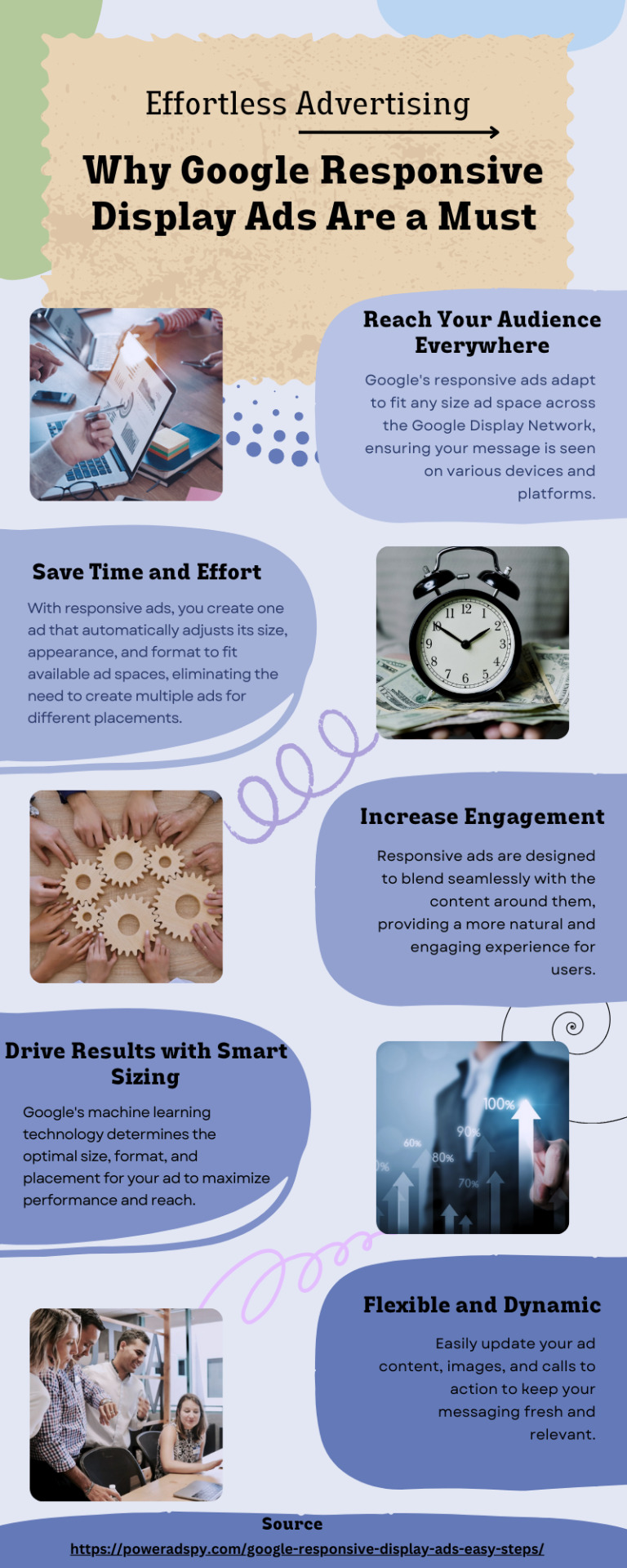
In this infographic, we will get to know about google responsive display ads. Responsive ads automatically adjust their size, appearance, and format to fit available ad spaces….
#google responsive display ads#display responsive ads#benefits of responsive display ads#ad spy tools#Google Display Ads
0 notes
Text
Google Ad business faces breakup after being charged with EU antitrust violations
Google may be forced to sell part of its ad business after being charged with violating the European Union’s antitrust laws. Following a lengthy investigation, the European Commission suggested that “mandatory divestment” is the only way the search engine can resolve the issue.
Why we care: If Google does sell part of its ad business, it could mark the start of a new digital marketing era with a more competitive market and fairer pricing. This could potentially lead to more transparency, greater campaign control for advertisers and increased innovation, which could prompt the creation of new ad tools.
What’s happening: The European Commission conducted a report into the operation of Google Ads and found that the search engine typically tends to favor its own ads, causing difficulties for competing providers.
When discussing potential solutions, the commission said that behavioral improvements would not be enough to rectify the matter. Instead, it has recommended that the search giant sells off part of its business.
What has Google said? Google released a statement today criticizing the commission’s findings. Dan Taylor, Vice President of Google Ads, wrote:
“The Statement of Objections from the European Commission sets out claims that are not new and relate to a narrow part of our advertising business. It fails to recognize how advanced advertising technology helps merchants reach customers and grow their businesses — while lowering costs and expanding choices for consumers.
“Ad tech is fiercely competitive and constantly evolving. We compete with hundreds of companies in this space, including household names like Amazon, Microsoft, and Meta as well as specialized advertising technology companies like Criteo, The Trade Desk, and many others. Even media companies and retailers now offer competing advertising technologies.
“The digital advertising market enjoys competitive pricing, lively innovation, and robust competition — helping advertisers, publishers, and consumers. We look forward to showing how our ad tech tools help make the internet open, and accessible — and how breaking them would diminish the availability of free, ad-supported content that benefits everyone.”
Has this happened before? Earlier this year, nine U.S. states (Michigan, Nebraska, Arizona, Illinois, Minnesota, New Hampshire, North Carolina, Washington, and West Virginia), joined forces to bring a similar lawsuit against Google.
The states accused the search engine’s ad business of violating antitrust regulations. To rectify the matter, they urged Google to break up its Ad Manager suite, claiming it was exploiting its online advertising dominance. Google denied the claims and asked for the case to be dismissed.
In 2020, Google was also accused of breaching antitrust laws again in order to sustain its position as the leading search engine. This case is set for trial in September.
Deeper dive: You can read Google’s full response to the European Commission announcement about its advertising technology.
Add Search Engine Land to your Google News feed.
Related stories
New on Search Engine Land
<![CDATA[ @media screen and (min-width: 800px) #div-gpt-ad-3191538-7 display: flex !important; justify-content: center !important; align-items: center !important; min-width:770px; min-height:260px; @media screen and (min-width: 1279px) #div-gpt-ad-3191538-7 display: flex !important; justify-content: center !important; align-items: center !important; min-width:800px!important; min-height:440px!important; ]]>
About the author
Nicola Agius is Paid Media Editor of Search Engine Land after joining in 2023. She covers paid search, paid social, retail media and more. Prior to this, she was SEO Director at Jungle Creations (2020-2023), overseeing the company’s editorial strategy for multiple websites. She has over 15 years of experience in journalism and has previously worked at OK! Magazine (2010-2014), Mail Online (2014-2015), Mirror (2015-2017), Digital Spy (2017-2018) and The Sun (2018-2020). She also previously teamed up with SEO agency Blue Array to co-author Amazon bestselling book ‘Mastering In-House SEO’.
Read more here https://sites.google.com/view/jedi-digital-marketing/social-media-management
2 notes
·
View notes
Text
How to Get Started with Display Ads Spy Tool

The top search engine in the world, Google, has been a smasher in recent years. Every other person uses Google to look for the answers to any pertinent or even unrelated questions. We can use Google for everything, from finding the uppermost information to delivering high-definition photographs. In comparison to Google, other search engines like Yahoo and Bing are not as popular. In the end, it's an SEO page for advertisers and marketers who are working harder to rank higher on Google.
For marketing in Google, there are lots of forms where we can advertise our brand or business. One of the most popular ad forms among them is Google Display Ads. Also, you can use the display ads spy tool for advertising in Google.
What is a Display Google Ad?
Display ads are the type of ads shown on the articles, videos, or websites that consumers browse. With Google Ads, you can serve your ads on the Google Display Network, a group of over two million websites that reach over 90% of Internet users across the globe.
Marketers use this network of advertisements to raise awareness of their brand or product. Among the fundamental characteristics are:
It is not a searchable advertisement.
Ads might be animated or static.
Simply spread the word about the company, service, or good.
The Google Display Network has directly approved the advertisement.
Since Google is one of the most visited websites, promoting on this platform is quite beneficial for marketers.
Benefits of Spy Tool Display Ads
Visually Appealing Display Ads
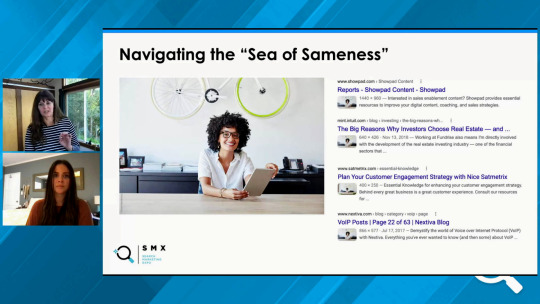
Display ads may be created and styled which is among their primary advantages. Regular PPC advertising must be text-based and adhere to character limits, which restricts how quickly and efficiently you can grab attention and get your point across.
Targeted Display Ads
It's crucial to focus your digital marketing efforts on the customers who matter most to your company. Similar to how Facebook advertising and PPC targeting work.
Ads on Display Increase Brand Awareness And Visibility
Display ads spy tool enables you to go on the attack and reach customers before they require a particular product or service from you.
Types Of Google Display Ads
Various types of Google display ads can be published going forward. Let's have a glance at them now:
Traditional Display Ads

The advertisement features skyscraper, square, and landscape image sizes. It primarily publishes on websites and comprises particular primary texts.
Responsive Display Ads
You can use multiple text headlines, descriptions, and images in responsive display ads. Advertisers can host the best advertisements in attractive formats for the targeted audience.
Retargeting Display Ads
Retargeting or remarketing display advertisements are the greatest google ads spy for targeting audiences for personalized content because they appear on the web pages of users who have just once visited your website.
Native Ads
Its unique selling point is that it doesn't at all appear to be an advertisement. Additionally, the appearance of these advertisements matches that of the website.
Social Ads
Social advertising is what you came across when browsing the news stream on social media platforms. We can say it is the most successful ad format for audience targeting.
Discovery Ads
It is a type of native advertisement that typically appears on Google Discover Results, Watch Next, Gmail Social, and YouTube search results.
Use Of Display Ads
You can use display ads in different places; let us see how:
Creativity

The one quality that should not be lacking when creating a display advertisement for your Instagram marketing campaign is inventiveness. In addition, CTA (Call-To-Action) buttons, your company name, tagline, and logo are significant in bringing visitors to your website.
Sizing
Because unreliable specifications can alter an advertisement's pixels and cause people to think it is pixelated, the ad's sizes should be standard. The pixels ought to be:
On the Google Display Network: 300 x 250, 728 x 90, and 120 x 60
Social networking sites: 1200 x 768 and 1080 x 1080
Display Networks
Publish the advertising on the most popular or trending platforms to attract the right audience. Like:
Google Display Networks
YouTube
Gmail
Social Media Platforms
Also watch: Best Facebook Ads Spy Tool - 2019 How to spy on competitors
youtube
Outcome
In general, the Google display ads spy tool is a helpful step for marketers that are serious about getting their website ranked at the top of search engine marketing. The importance of display ads for marketers in raising consumer awareness of their goods should be clear to our readers, we hope.
0 notes
Text

Google Ads Spy
In this infographics, you will get to know about Google ads spy.
0 notes
Text
Google Ad business faces breakup after being charged with EU antitrust violations
Google may be forced to sell part of its ad business after being charged with violating the European Union’s antitrust laws. Following a lengthy investigation, the European Commission suggested that “mandatory divestment” is the only way the search engine can resolve the issue.
Why we care: If Google does sell part of its ad business, it could mark the start of a new digital marketing era with a more competitive market and fairer pricing. This could potentially lead to more transparency, greater campaign control for advertisers and increased innovation, which could prompt the creation of new ad tools.
What’s happening: The European Commission conducted a report into the operation of Google Ads and found that the search engine typically tends to favor its own ads, causing difficulties for competing providers.
When discussing potential solutions, the commission said that behavioral improvements would not be enough to rectify the matter. Instead, it has recommended that the search giant sells off part of its business.
What has Google said? Google released a statement today criticizing the commission’s findings. Dan Taylor, Vice President of Google Ads, wrote:
“The Statement of Objections from the European Commission sets out claims that are not new and relate to a narrow part of our advertising business. It fails to recognize how advanced advertising technology helps merchants reach customers and grow their businesses — while lowering costs and expanding choices for consumers.
“Ad tech is fiercely competitive and constantly evolving. We compete with hundreds of companies in this space, including household names like Amazon, Microsoft, and Meta as well as specialized advertising technology companies like Criteo, The Trade Desk, and many others. Even media companies and retailers now offer competing advertising technologies.
“The digital advertising market enjoys competitive pricing, lively innovation, and robust competition — helping advertisers, publishers, and consumers. We look forward to showing how our ad tech tools help make the internet open, and accessible — and how breaking them would diminish the availability of free, ad-supported content that benefits everyone.”
Has this happened before? Earlier this year, nine U.S. states (Michigan, Nebraska, Arizona, Illinois, Minnesota, New Hampshire, North Carolina, Washington, and West Virginia), joined forces to bring a similar lawsuit against Google.
The states accused the search engine’s ad business of violating antitrust regulations. To rectify the matter, they urged Google to break up its Ad Manager suite, claiming it was exploiting its online advertising dominance. Google denied the claims and asked for the case to be dismissed.
In 2020, Google was also accused of breaching antitrust laws again in order to sustain its position as the leading search engine. This case is set for trial in September.
Deeper dive: You can read Google’s full response to the European Commission announcement about its advertising technology.
Add Search Engine Land to your Google News feed.
Related stories
New on Search Engine Land
<![CDATA[ @media screen and (min-width: 800px) #div-gpt-ad-3191538-7 display: flex !important; justify-content: center !important; align-items: center !important; min-width:770px; min-height:260px; @media screen and (min-width: 1279px) #div-gpt-ad-3191538-7 display: flex !important; justify-content: center !important; align-items: center !important; min-width:800px!important; min-height:440px!important; ]]>
About the author
Nicola Agius is Paid Media Editor of Search Engine Land after joining in 2023. She covers paid search, paid social, retail media and more. Prior to this, she was SEO Director at Jungle Creations (2020-2023), overseeing the company’s editorial strategy for multiple websites. She has over 15 years of experience in journalism and has previously worked at OK! Magazine (2010-2014), Mail Online (2014-2015), Mirror (2015-2017), Digital Spy (2017-2018) and The Sun (2018-2020). She also previously teamed up with SEO agency Blue Array to co-author Amazon bestselling book ‘Mastering In-House SEO’.
Read more here https://sites.google.com/view/jedi-digital-marketing/social-media-management
4 notes
·
View notes
Text
We should ban TikTok('s surveillance)

With the RESTRICT Act, Congress is proposing to continue Trump’s war on Tiktok, enacting a US ban on the Chinese-owned service. How will they do this? Congress isn’t clear. In practice, banning stuff on the internet is hard, especially if you don’t have a national firewall:
https://doctorow.medium.com/theyre-still-trying-to-ban-cryptography-33aa668dc602
If you’d like an essay-formatted version of this post to read or share, here’s a link to it on pluralistic.net, my surveillance-free, ad-free, tracker-free blog:
https://pluralistic.net/2023/03/30/tik-tok-tow/#good-politics-for-electoral-victories
My guess is that they’re thinking of ordering the mobile duopoly of Google and Apple to nuke the Tiktok app from their app stores. That’s how they do it in China, after all: when China wanted to ban VPNs and other privacy tools, they just ordered Apple to remove them from the App Store, and Apple rolled over:
https://pluralistic.net/2022/11/11/foreseeable-consequences/#airdropped
That’s the completely foreseeable consequence of arrogating the power to decide which software every mobile user on earth is entitled to use — as Google and Apple have done. Once you put that gun on the mantelpiece in Act I, you damn betcha that some strong-man backed by a powerful state is going to come along and shoot it by Act III.
The same goes for commercial surveillance: once you collect massive, nonconsensual dossiers on every technology user alive, you don’t get to act surprised when cops and spies show up and order your company to serve as deputies for a massive, off-the-books warrantless surveillance project.
Hell, a cynic might even say that commercial surveillance companies are betting on this. The surveillance public-private partnership is a vicious cycle: corporations let cops and spies plunder our data; then the cops and spies lobby against privacy laws that would prevent these corporations from spying on us:
https://pluralistic.net/2023/01/25/nationalize-moderna/#hun-sen
Which makes the RESTRICT Act an especially foolish project. If the Chinese state wants to procure data on Americans, it need not convince us to install Tiktok. It can simply plunk down a credit card with any of the many unregulated data-brokers who feed the American tech giants the dossiers that the NSA and local cops rely on.
Every American tech giant is at least as bad for privacy as Tiktok is — yes, even Apple. Sure, Apple lets its users block Facebook spying with a single tap — but even if you opt out of “tracking,” Apple still secretly gathers exactly the same kinds of data as Facebook, and uses it to power its own ad product:
https://pluralistic.net/2022/11/14/luxury-surveillance/#liar-liar
There is no such thing as a privacy-respecting tech giant. Long before Apple plastered our cities with lying billboards proclaiming its reverence for privacy, Microsoft positioned itself as the non-spying alternative to Google, which would be great, except Microsoft spies on hundreds of millions of people and sells the data:
https://pluralistic.net/2020/11/25/the-peoples-amazon/#clippys-revenge
Tech’s surveillance addiction means that Tiktok’s own alternative to the RESTRICT Act is also unbelievably stupid. The company has proposed to put itself under Oracle’s supervision, letting Oracle host its data and audit its code. You know, Oracle, the company that built the Great Firewall of China 1.0:
https://www.eff.org/deeplinks/2010/01/selling-china-surveillance
We should not trust Tiktok any more than we trust Apple, Facebook, Google or Microsoft. Tiktok lied about whether it was sending data to China before:
https://www.buzzfeednews.com/article/emilybakerwhite/tiktok-tapes-us-user-data-china-bytedance-access
And even if it keeps its promise not to send user data to China, that promise is meaningless — it can still send the vectors and models it creates with that data to China — these being far more useful for things like disinformation campaigns and population-scale inferences than the mere logs from your Tiktok sessions.
There are so many potentially harmful ways to process commercial surveillance data that trying to enumerate all the things that a corporation is allowed to do with the data it extracts from us is a fool’s errand. Instead, we should ban companies from spying on us, whether they are Chinese or American.
Corporations are remorseless, paperclip-maximizing colony organisms that perceive us as inconvenient gut-flora, and they lack any executive function (as do their “executives”), and they cannot self-regulate. To keep corporations from harming us, we must make it illegal for them to enact harm, and punish them when they break the law:
https://doctorow.medium.com/small-government-fd5870a9462e
After all, the problem with Tiktok isn’t the delightful videos or the fact that it’s teaching a generation of children to be expert sound- and video-editors. The problem with Tiktok is that it spies on us. Just like the problem with Facebook isn’t that it lets us communicate with our friends, and the problem with Google isn’t that it operates a search engine.
Now, these companies will tell you that the two can’t be separated, that a bearded prophet came down off a mountain with two stone tablets, intoning, “Larry, Sergey, thou shalt stop rotating thine logfiles and, lo, thou wilt data-mine them for actionable market intelligence.” But it’s nonsense. Google ran for years without surveillance. Facebook billed itself as the privacy-forward alternative to Myspace and promised never to spy on us:
https://papers.ssrn.com/sol3/papers.cfm?abstract_id=3247362
The inevitabilist narrative that says that corporations must violate our rights in order to make the products we love is unadulterated Mr Gotcha nonsense: “Yet you participate in society. Curious. I am very intelligent”:
https://thenib.com/mister-gotcha/
Of course, corporations push this narrative all the time, which is why American Big Tech has been quietly supporting a ban on Tiktok, which (coincidentally) has managed to gain a foothold in the otherwise impregnable, decaying, enshittified oligarchy that US companies have created.
They have conspicuously failed to call for any kind of working solution, like a federal privacy law that would ban commercial surveillance, and extend a “private right of action,” so people could sue tech giants and data-brokers who violated the law, without having to convince a regulator, DA or Attorney General to bestir themselves:
https://www.eff.org/deeplinks/2019/01/you-should-have-right-sue-companies-violate-your-privacy
Instead, the tech giants have the incredible gall to characterize themselves as the defenders of our privacy — at least, so long as the Chinese government is the adversary, and so long as its privacy violations come via an app, and not buy handing a credit card to the data-brokers that are the soil bacteria that keeps Big Tech’s ecosystem circulating. In the upside-down land of Big Tech lobbying, privacy is a benefit of monopoly — not something we have to smash monopolies to attain:
https://www.eff.org/wp/interoperability-and-privacy
Not everyone in Congress is onboard with the RESTRICT Act. AOC has come out for a federal privacy law that applies to all companies, rather than a ban on an app that tens of millions of young Americans love:
https://www.businessinsider.com/aoc-first-tiktok-congress-ban-without-being-clued-in-2023-3
You know who agrees with AOC? Rand Paul. Yes, that absolute piece of shit. Paul told his caucusmates in the GOP that banning an app that millions of young American voters love is bad electoral politics. This fact is so obvious that even Rand fucking Paul can understand it:
https://gizmodo.com/rand-paul-opposes-tiktok-ban-warns-republicans-1850278167
Paul is absolutely right to call a Tiktok ban a “national strategy to permanently lose elections for a generation.” The Democrats should listen to him, because the GOP won’t. As between the two parties, the GOP is far more in thrall to the Chamber of Commerce and the rest of the business lobby. They are never going to back a policy that’s as good for the people and as bad for big business as a federal privacy law.
The Democrats have the opportunity to position themselves as “the party that wants to keep Tiktok but force it to stop being creepy, along with all the other tech companies,” while the GOP positions itself as “the party of angry technophobes who want to make sure that any fun you have is closely monitored by Mark Zuckerberg, Sundar Pinchai and Tim Cook and their pale imitations of the things you love about Tiktok.”
That’s not just good electoral politics — it’s good policy. Young voters aren’t going to turn out to the polls for performative Cold War 2.0 nonsense, but they will be pissed as hell at whoever takes away their Tiktok.
And if you do care about Cold War 2.0, then you should be banning surveillance, not Tiktok; the Chinese government has plenty of US dollars at its disposal to spend in America’s freewheeling, unregulated data markets — as do criminals, petty and organized, and every other nation-state adversary of the USA.
The RESTRICT Act is a garbage law straight out of the Clinton era, a kind of King Canute decree that goes so far as to potentially prohibit the use of VPNs to circumvent its provisions. America doesn’t need a Great Firewall to keep itself safe from tech spying — it needs a privacy law.
Have you ever wanted to say thank you for these posts? Here’s how you can: I’m kickstarting the audiobook for my next novel, a post-cyberpunk anti-finance finance thriller about Silicon Valley scams called Red Team Blues. Amazon’s Audible refuses to carry my audiobooks because they’re DRM free, but crowdfunding makes them possible.
Image:
Cryteria (modified)
https://commons.wikimedia.org/wiki/File:HAL9000.svg
CC BY 3.0
https://creativecommons.org/licenses/by/3.0/deed.en
[Image ID: A modified vintage editorial cartoon. Uncle Sam peeks out over a 'frowning battlement' whose cannon-slots are filled with telescopes from which peer the red glaring eyes of HAL 9000 from '2001: A Space Odyssey.' Topping the battlements in a row are Uncle Sam and three business-suited figures with dollar-sign-bags for heads. The three dollar-bag men have corporate logos on their breasts: Facebook, Google, Apple. Standing on the strand below the battlements, peering up, is a forlorn figure with a Tiktok logo for a head. The fortress wall bears the words 'RESTRICT Act.']
#rand paul is right actually ugh ugh ugh#politics#oracle#restrict act#privacy#privacy without monopoly#tiktok#commercial surveillance#trade war#bytedance#apple#google#facebook#meta#usausausa#generational warfare#electoral strategy#pluralistic#aoc
116 notes
·
View notes